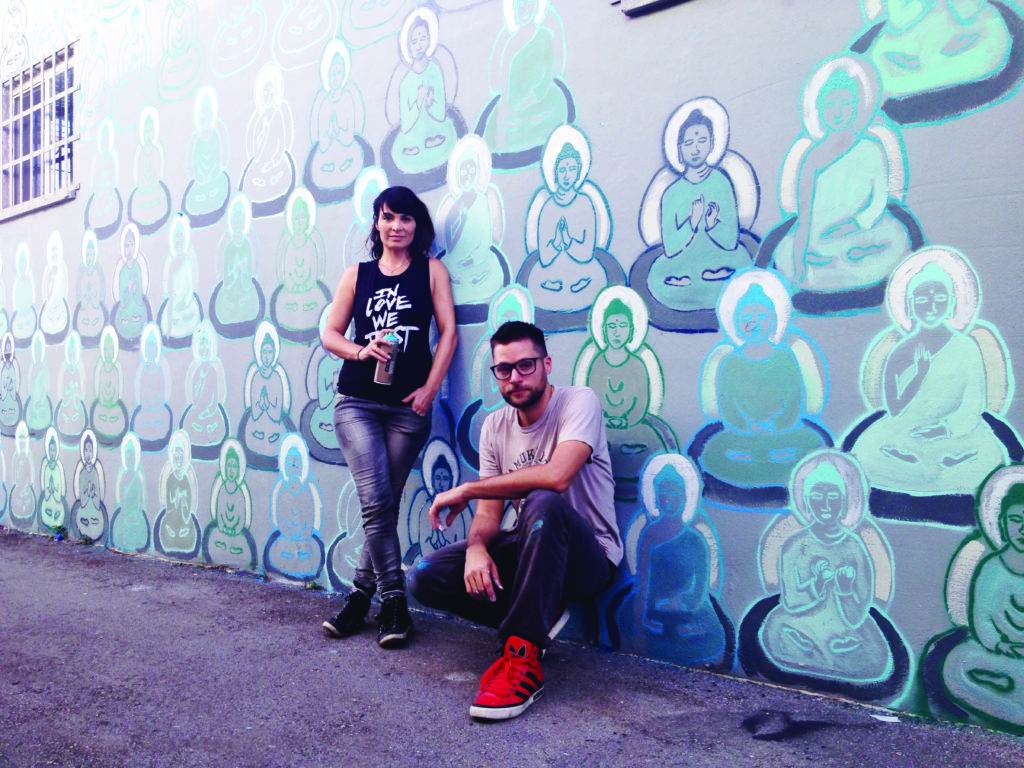
Nicholas and Amanda Giacomini enjoy a rare yoga love story, having met on January 2, 2000, at an Ashtanga teacher training held by their mutual teacher Larry Schultz. Nick was only 20 and Amanda was married at the time. They learned to be good friends before becoming lovers—a virtue they claim helps sustain their collaborative partnership.
Amanda hails from Massachusetts. At 17, following her graduation from Andover Academy, she came to study fine arts at UC Berkeley. Nick is a fourth generation North Bay native whose parents divorced after his father came out of the closet when Nick was becoming a teen. Raised Catholic, he says now that homosexuality-as-sin confusion was one of the many triggers that catapulted him into a depressed crisis that included plenty of drugs and police arrests. He was expelled from every school he attended until he wound up at the Hanna Boys Center in Sonoma, where he found refuge in music, art, and sleep. He credits yoga with transforming his life and has fashioned a successful career as MC Yogi, a sought-after instructor, performer, emcee, and visual artist who earned multiple invitations to teach at the Obama White House along with headliner appearances at the world’s most prestigious yoga festivals.
With fascinating stories including multiple nearfatal car accidents, Nick and Amanda share grounded yoga wisdom—particularly for being such a young couple. Nick’s music uniquely combines uplifting spiritual messages with contemporary hip-hop beats. He has released multiple albums and a memoir, Spiritual Graffiti: Finding My True Path, while Amanda is creator of the 10,000 Buddhas Project. We caught up with them at their Point Reyes yoga studio, known as Yoga Toes.
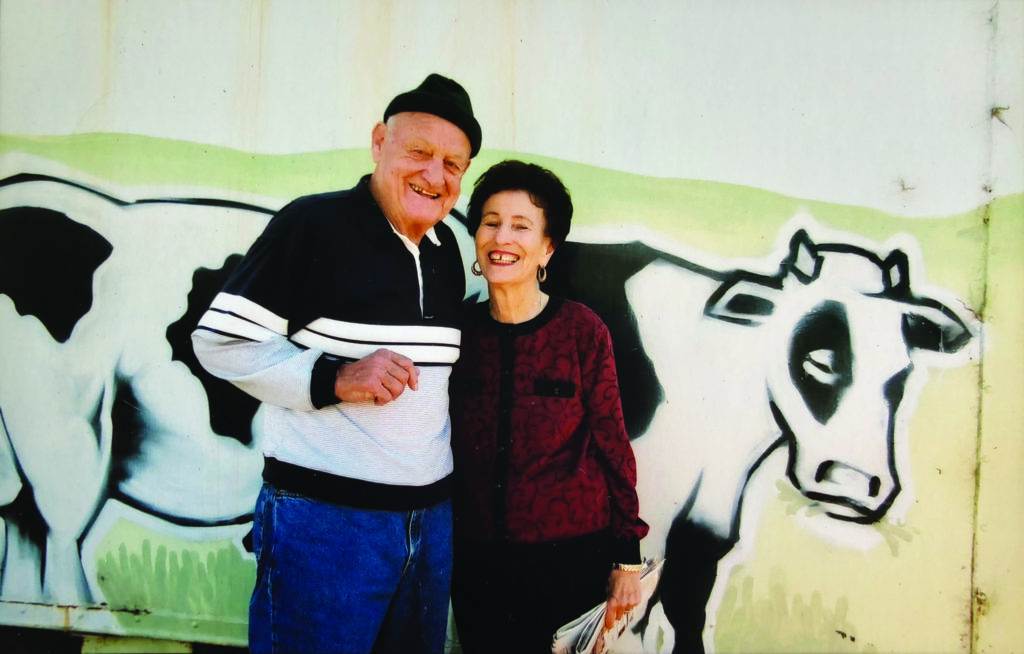
Common Ground: “So you’re stronger than you think you are, Lucky.” What’s the significance of that phrase?
Nick Giacomini aka MC Yogi: [laughs] Larry Schultz, my first yoga teacher, said that to me. Larry was a crazy rock ‘n roll kind of motivational yogi who started It’s Yoga in San Francisco. He had famously toured and taught yoga with the Grateful Dead. He called me Lucky because that was my grandfather Toby’s nickname. Toby was a gregarious outgoing generous spirit, always giving things away and making people smile and laugh. He used to always say, “Man, it’s so beautiful! How could it get better than this?” Everyone called him Lucky, not because of some external, superficial materialistic reason but because of his heartfelt attitude. He felt that just being alive meant—we’re lucky. When Toby was in his twilight years I became his sidekick and copilot. I’d drive him around and people started calling me Lucky. It was contagious.
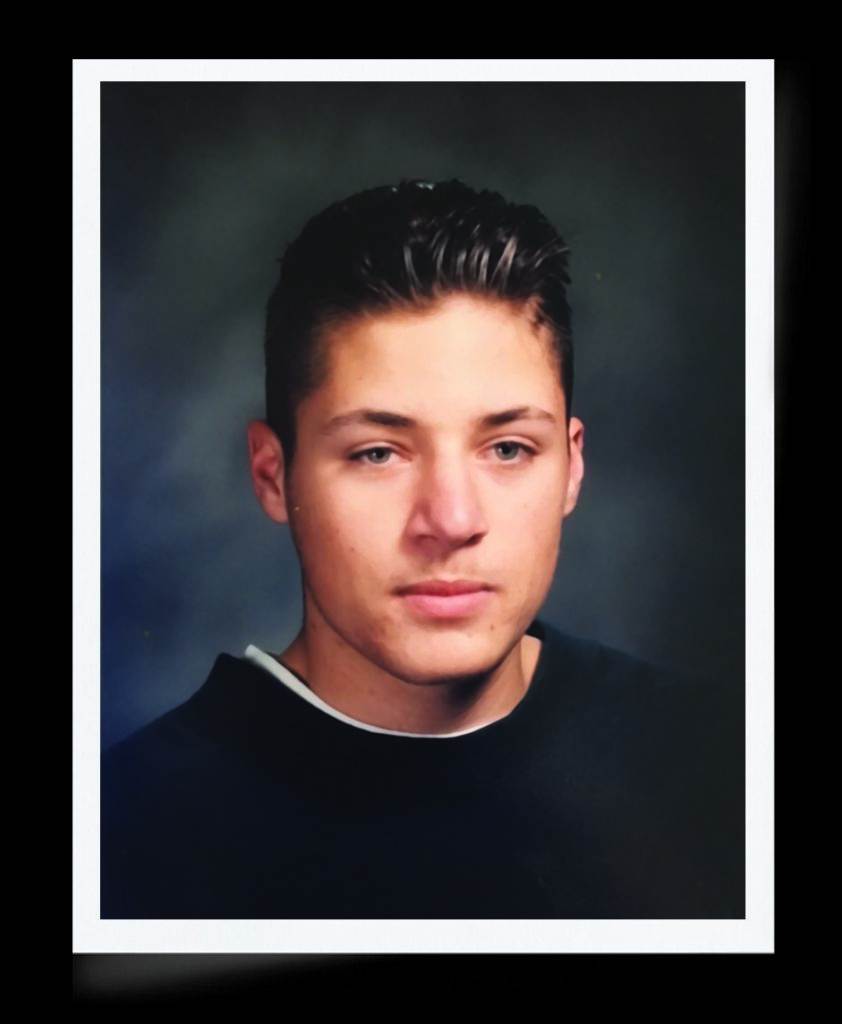
The Giacomini family has been in West Marin since the 19th century, no?
The little I know is that the Giacominis came from Italy during the Gold Rush and ended up settling around this area—Petaluma, Sonoma, and Marin County. They didn’t have a lot of money but did have a strong work ethic. My grandfather was a product of the Depression. One Christmas day he said to my grandmother, “I sold the family car and I bought a truck and I’m going into the trucking business.” He started small, hauling stuff from the dairies, and worked hard. Then he kept going until at one point he had the feed store, semi trucks hauling stuff all up and down California. But it all started from one single truck and his desire to make something with his life.
He grew alongside the regional dairy industries—the Stornettas, Straus Creamery. He was based here in Point Reyes?
Yeah. My grandma grew up in Petaluma. And my mom’s family emigrated from a small poor island in Portugal. My mom told me she never owned a pair of shoes before she came to America. They didn’t speak English nor have any money. Seven brothers and sisters came over and worked on the farms. I’m fourth-generation on my father’s side and first-generation on my mom’s side. Both sides of my family had that in common—working really hard and creating a life in the New World.
You grew up Catholic, right? Were they pious?
Both my parents were Catholic but it was my grandmother on my dad’s side who was very pious. We called her Big Mama. She was my first catechism teacher. Every night she used to do the rosary and pray for the family. I’d often sit with her and we’d read from the Bible together and go through the rosary.
What was the effect on you—the Godfearing Catholic background?
My only real connection was through my grandma. I saw her devotion and how it influenced her life and I was inspired by that but I didn’t resonate with Catholicism and the Church in terms of the dogma. It just seemed disconnected for me. All that superstition and dry empty robotic rituals that I didn’t understand. [chuckles] And the stories of Hell—that heavy trip! As a kid I just remember it felt weird and didn’t make sense.
Then when you were about eight your dad comes out of the closet at a time when society was less tolerant of homosexuality. Can you describe how you took that on?
I was too young to really understand what that meant but yeah, it was like a heavy secret. I mean I ended up moving around and going to different schools and going to Catholic school and the indoctrination of the Church is that this was a sin, which I never totally understood. It just became heavy baggage that I had to lug around and figure out.
It seems that before your life went into a downward spiral you’d had a happy childhood until your parents divorced. Was this because your dad came out of the closet?
Yeah, that was really the catalyst.
You’ve had a number of near-fatal car accidents. Can you describe the first?
That accident happened right as the divorce was finalizing between my parents and it happened at the exact midway point between my parents’ homes. My world was cracked open because both sides of my family started to drift apart and I started falling into the gap. I didn’t know what I could rely on anymore—spiraling me on a journey to try to figure out what was real.
Do you remember the accident itself?
I remember very clearly. We almost died. We were listening to Bob Marley in my dad’s car. CDs had just come out and we just got Exodus. All of us were in a general good mood going up this hill when my dad’s tire caught in the gravel. He tried to correct it and actually overcorrected. As he tried to get us back on the road the car spun and hit a telephone pole nose-first. Then the car rolled down the hill. It all happened in slow motion but it was very dramatic. My sister’s hand went through the window and I just remember the chaos and the screams and the confusion. I ran up the side of the mountain to get help because I was the oldest. Right as I was about to step onto the road someone yelled “Stop!” I was about to step on the broken electrical wire. So I almost died twice [laughs]! Then we were ushered into the ambulance.
Indirectly, this first accident introduced you to yoga?
It wasn’t until many years later that I found out that the incident led my dad to his first yoga class with Larry Schultz. A friend of his recommended that he go to a yoga class to help recover. He did and became dedicated to the practice. In the same way my grandmother was naturally devoted—that inspired devotion in me. Perhaps because it was natural and not superimposed on me. When my dad started practicing yoga he never talked about it. It just seemed to enter his bones. Eventually I noticed his transformation and how he was becoming more relaxed and in tune with himself and I became curious. Eventually I asked him what was going on and he replied, “It’s yoga.” Now that I’ve been practicing yoga for 20 years and teaching for 18 I have found that most people come to yoga because of some tragedy or health crisis. Something is broken and they’re trying to reconnect.
Before finding yoga you went far afield, a kind of lost bad boy.
Becoming a teenager is a confusing time for anybody, trying to figure out who you are in relationship to yourself, your parents, your religion, fitting in with friends. I started doing drugs and partying pretty young and failed all my classes. I kept getting suspended and got kicked out of every school I attended. I was never violent or anything but just disconnected, aloof, detached—seen as a problem kid. The fact is I was struggling with depression. My parents put me in therapy and wanted to medicate me. The therapist recommended Ritalin and Adderall. Personally I think I was just having a spiritual crisis of not knowing what was real and reliable.
Besides drugs how else did you cope as a teen?
Three things. One, I’m a dreamer. I used to love to sleep and escape within my dreams. I found it was a controlled way to escape the pressure and pain of the external world. I almost became a narcoleptic. I flunked my classes because I wouldn’t pay attention to the teacher or do any homework because I was always sleeping.
The second thing was music. I’d put my headphones on and drown out all the arguments and whatever was going on externally. I got lost in the world of music. The third was art. Since early on I loved to draw, which helped me develop my imagination. I had to figure out ways to deal with the world on my own terms and essentially turn pain into art. I think this is why in a lot of ways I am just so creative.
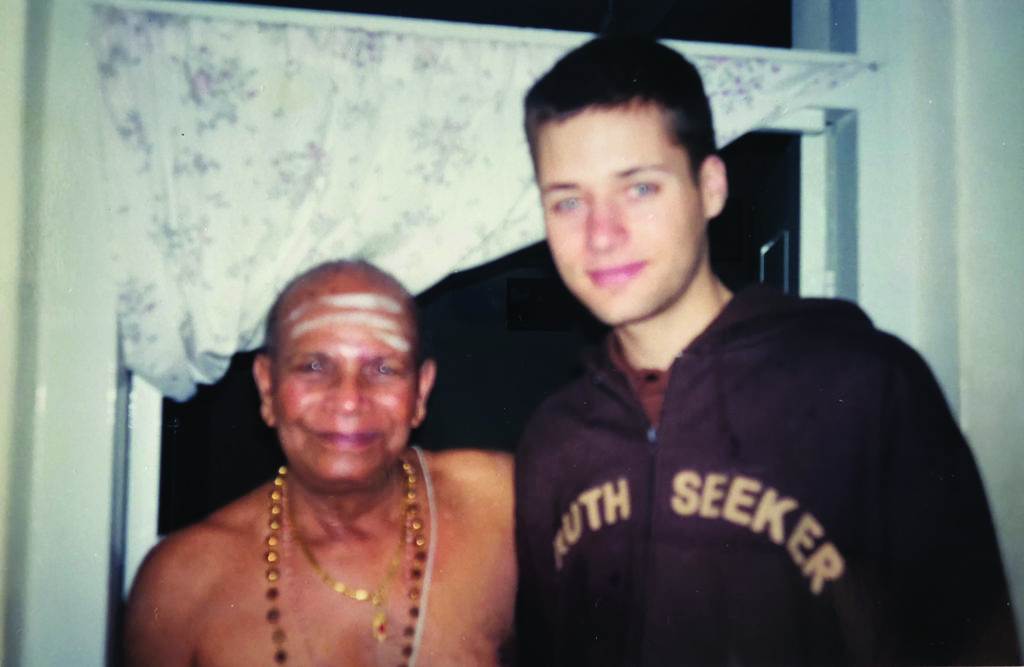
I am comparing you to Noah Levine’s [Dharma Punx] story but my impression is that yours wasn’t as heavily drug infused.
I’m good friends with Noah and we definitely have a rhyming journey but I never spiraled that far. Early on I witnessed firsthand a couple kids that I ran with who overdosed, committed suicide, got involved in really heavy drugs. I realized I had to draw the line somewhere. Some part of me knew there was a limit to what I could get away with. I never went so extreme that I couldn’t come back. I never went down the road of opiates and heroin or sniffed anything. There was some intuitive thing or maybe the voice of my grandpa or some higher angels.
I’ve often driven by the Hanna Boys Center, which looks ominous, and wondered what it’s like there. You’re the only one I can ask.
After getting kicked out of every school, including continuation-type schools for troubled kids, I ended up going to the Hanna Boys Center, a group home in Sonoma. Honestly, at first that place was really sad but it turned out to be a blessing. I really lacked the structure and the discipline needed to just put one foot in front of the other and get through. So it helped me get my grades up and graduate. Everyone has a different experience but mine was positive.
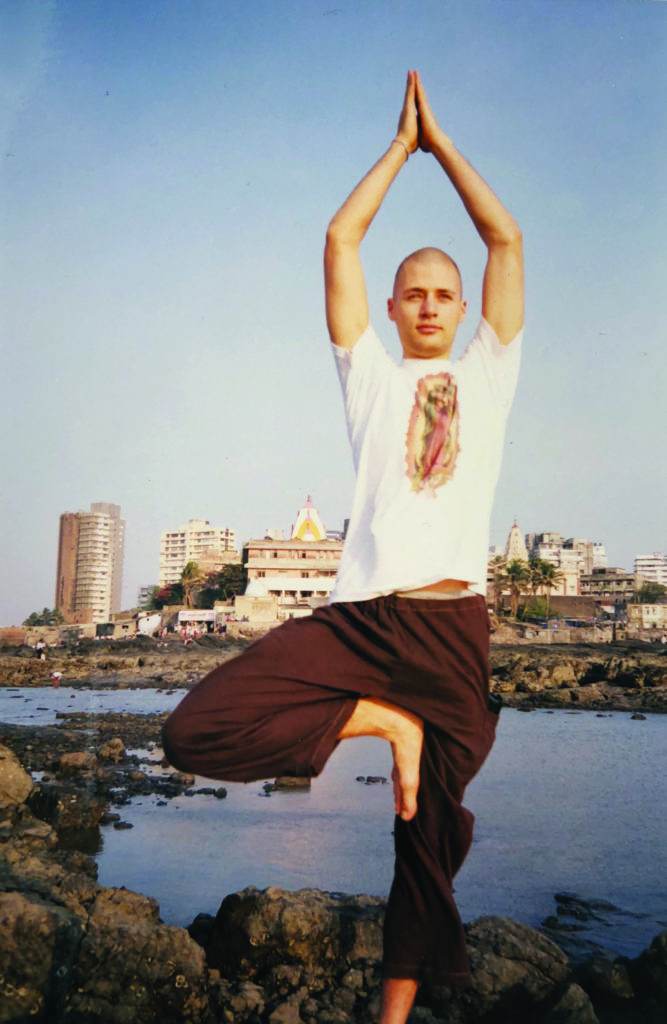
As you know I’m raising a teenager who’s giving me a revived glimpse into that tricky age you’re describing. I see a lot of drug use but sometimes I question what’s worse—the concentrated THC or the misogyny coming from hip-hop. What’s your take on the music?
sighs] There’s a lot of troubling messages in the music world. Unfortunately it’s been like that for a long time. But there are also really inspiring, powerful, profound artists. I was lucky because when I was young my dad turned me on to Bob Marley and we used to listen to the Beatles and I was really into soul music. And I’ve always gravitated toward music that had roots in devotional music.
Yeah. What about good old-fashioned love songs?
[laughs] Yeah, love songs. We live in a busy, noisy, hectic, chaotic world but that doesn’t mean that love is not shining powerfully underneath in the form of silence and presence. I think it was through my yoga that I was able to really turn up the volume on my breath and turn down the volume on my chattering monkey mind. Yoga helped me get in touch with that space inside myself where I could tap into my own music. I think everyone, on some level, needs to figure out what kind of song they want to sing. Sometimes you’ve got to listen to a lot of different kinds of songs before you figure out what’s yours. I decided I want my life to be a devotional love song.
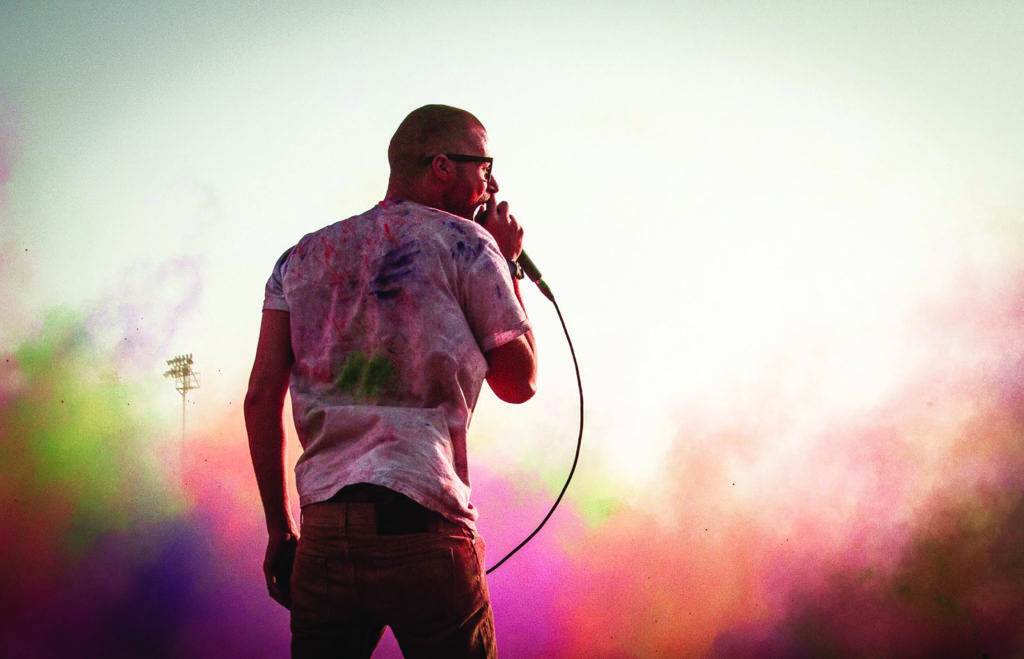
In your tradition of hip-hop rap did you ever feel like the goody two-shoes? The presumption is that had you gone in another direction you might’ve been more affluent as a music man.
One of the first pieces of advice I was given from this record industry guy was that I should be more angry, like Eminem. But I didn’t really feel that. I was practicing yoga and meditating all day. I’d become vegetarian. I was reading scriptures and hanging out with older people and vibing on everything that yoga was offering. Yoga had turned me around at that point and I was genuinely lit up. My music came across as kind of nerdy and weird but also kind of fun and free. Honestly I think that’s what helped me stand out. When you do something that is authentically in your heart it’s going to stand out because everybody else on some level is just trying to fit into the status quo. There’s actually power in being different.
I learned how to adapt while staying true to my vision. And I think that the more I progressed and the more I produced, the more I realized how to connect to my audience. That’s the real dance—to find the balance. B.K.S. Iyengar said something to that effect: “The definition of enlightenment is becoming innocent without becoming ignorant.” I resonate with that because as we get older we tend to get bitter and jaded as we see how messed up and dark the world is and how corrupt so many of our institutions are. Through yoga and meditation I realized that the only real power I have is to keep coming back to my own alignment. I can increase my own ability to stand in my truth regardless of what’s going on around me. That’s a real practice but not easy.
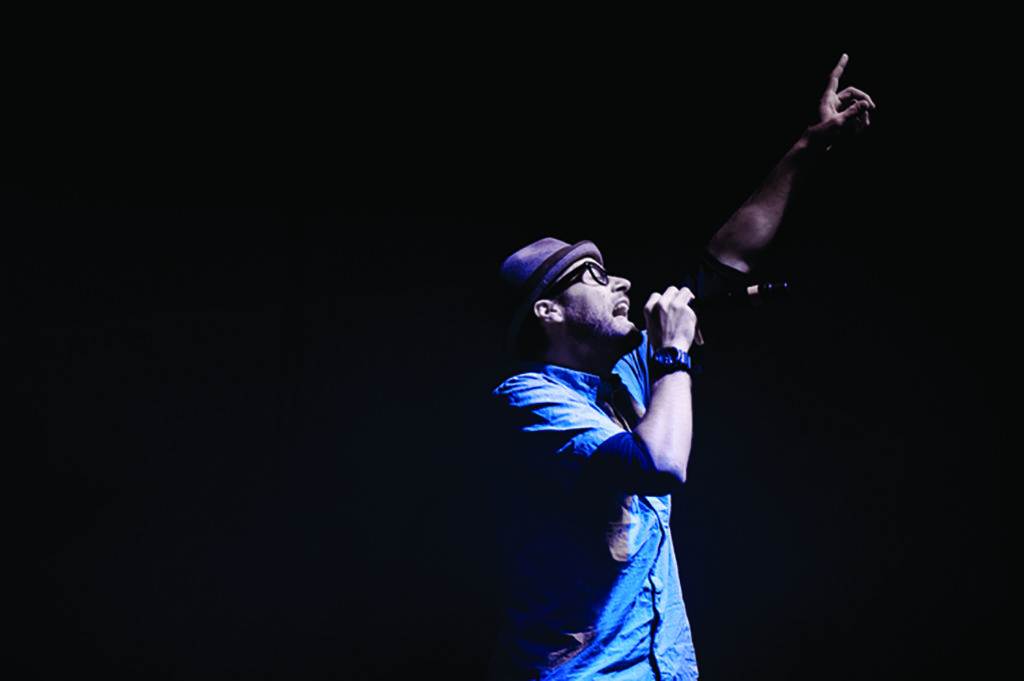
I know Common Ground readers appreciate your yogic messages like “Be the Change” or “Give Love” but do you ever think “Dang, too bad these aren’t getting into underserved neighborhoods”?
Here’s the thing about music—it’s like wind. Music goes where it wants to go and finds its way to the places where it needs to be heard. That’s the power of music. I don’t have demographics or target markets or think tanks. I’m an independent artist so I just make the music that’s authentic to me and trust the universe that it’s eventually, maybe not in my lifetime, going to find the people who appreciate it and can benefit from it. It’s not my business who ends up listening to it. That’s beyond the realm of my control. My power is to develop my craft and keep working to make better songs.
You just now finished teaching a class. You teach yoga every day, right?
Yeah, all over. I teach in juvenile halls, I teach to at-risk communities. I was just in Southern California teaching to a summer program that brought together 300 at-risk kids from six different schools. I love teaching yoga and sharing my story because I get to look into the kids’ eyes and see how far I’ve come. I can remember what it was like at 14 or 15 and not knowing what was going on. And you know hopefully I can help shine a little light.
Between drawing and singing and teaching, do you have any preferences?
It’s something of an evolving wheel. Some days I just want to meditate. Some days I just want to teach. Some days I want to perform. Some days I want to study, or write, or I want to travel, or stay home, But it all revolves around the same hub—the center of that wheel is living a life that’s rooted in direct experience—of being present as much as possible and being open.
You’re a good value for a festival producer because you can emcee, perform, teach, give workshops. What am I forgetting here?
[laughs] Not a one-trick yogi! Well, Amanda and I paint murals together. We design stuff.
[laughs] I think it’s time to talk to Amanda. [to Amanda] Hi Amanda! Why don’t you tell the story of the first time you met this boy.
Amanda: It was day two of the new millennium, January 2, 2000, and I had already been practicing Ashtanga yoga in San Francisco for about six years with Larry Schultz. Larry had coaxed me to take the teacher training even though I had no intention of becoming a yoga teacher. My practice had plateaued so I consented. I met Nicholas on the first day of teacher training. He was having lunch with Larry. I remember sitting with him and not really saying too much to each other when all of a sudden Larry starts talking about how all these couples had met through him and through yoga and how they fell in love and got married and opened their own yoga studios. In Larry’s mind a great wave of yoga was spreading around the world through moments like this. In retrospect it felt Larry was having a prophetic moment and saw our whole lives spread out before us. That was the first moment we met.
But you were married at the time.
Yeah, so I wasn’t exactly like “Who’s this?” I wasn’t thinking about that. I was just meeting someone and going to practice. Then we became really good friends during the training and then I fell in love with him.
It wasn’t too long afterward that he nearly killed you in a car. Can you tell the story?
It was the morning after his 21st birthday and we hadn’t seen each other for a whole month as I was trying to figure out what trajectory my life was going to take. Was I going to try to stay with the person I was with? Or was I ready to be in relationship with Nick? The deciding day was the day of his birthday—and, well—I decided to show up to his birthday!
Also that night we found out that his dad had gifted us tickets to a weeklong intensive with Pattabhi Jois, our teacher’s teacher from India. The retreat started the next day in Encinitas. So this was a big exciting thing and we being big yoga nerds loaded up my car to go. We timed it so that if we drove all night we could make it to the first practice in the morning. So we’re driving fast down the I-5 and at some point close to dawn Nick, who was driving, nodded off at the wheel. I had been asleep so I woke up as the car was spinning. It was very strange because I didn’t have time to become afraid of the crash because I woke up in the middle of it. It was very surreal! I saw the car—almost like watching it from above, in slow motion. I saw the car spinning and going off the road and then all of a sudden felt the impact when we broke through a fence and started to roll off the highway. The car flipped several times and finally came to a stop. I remember looking own and checking: “Are my arms and legs still here?” Very surreal and I’m obviously in shock but I was asking myself, “What’s happening in this moment?”
[laughs] It was a very romantic car crash because the car had stopped on its side and Nick reached up and unbuckled me and I kind of fell into his arms. We climbed out of the car and we were in a field of wildflowers at the break of dawn. And there was another moment of, like, “What is happening?” I remember again thinking, “Is this really what’s happening or did we die?” “Are we now in some celestial realm?” Before the crash we had made the mistake of listening to soothing Indian ragas, which are not good driving music. The cassettes were still jammed in the car stereo.
Oh my God, you’d have been better off listening to the Beastie Boys. So you didn’t know if you were alive or dead?
It was a very surreal moment. Someone saw the car go off the road and had called Highway Patrol and so we had a period of quietness and being together at sunrise making sure we were okay. Then an officer came and checked on us. The car was totaled like an accordion—towed away. We grabbed our stuff, got a rental car without skipping a beat. Unbelievably we continued to make it to our practice with Pattabhi Jois. [laughs] Now I do most of the driving.
What was your impression upon meeting Pattabhi Jois for the first time?
It was amazing. What struck me was that at Larry’s studio, It’s Yoga, which was big, I was used to practicing with 70-80 people, which is a lot. But in Encinitas with Pattabhi Jois in the gymnasium it was like an army of 500 Ashtangi yogis practicing together, an exhilarating community to experience for the first time.
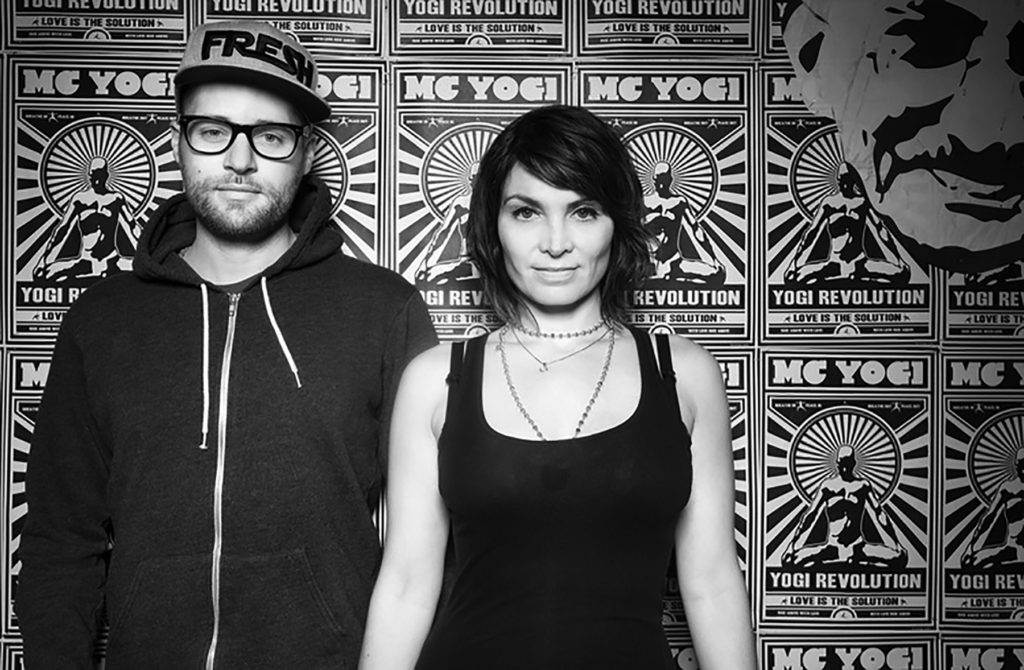
Relationship is arguably the most challenging yoga. It’s statistically rare for a young couple to stay together for nearly 20 years. What’s your secret sauce?
We came together through yoga and that continues to be our core connection point. Yoga has given us each a strong individual foundation and it’s created a strong foundation and stability for the marriage.
Okay, but it also appears that the yoga community is rife with healthy libidos. Have you crossed that barrier as the novelty of each other wears off?
Nick: One of the things we do is we meditate a lot together and I think the process of just being quiet and still and peaceful in the same moment has a way of realigning and recalibrating everything. Sometimes it’s the simplest practices that are effective when you’re doing them together and that creates harmony and unity.
Amanda: No, I feel lucky. Nicholas is really a fun person to be married to. He’s always keeping it fresh, He’s always creating new adventures for us to go on and life has never been dull. So I look forward to seeing what’s around the corner. I’m always amazed. When we were first together studying yoga I remember the yoga sutras talking about “thought, word, and deed.” I embodied that thinking, “If I’m going to be true and married to someone let it be in thought, word, and deed.” Once you start talking badly about your partner or talking about being with other people or being flirty conversationally that can be a slippery slope into some action that you maybe weren’t even intending.
For me loyalty is a discipline but you have to be on guard because we’re all human. Another of my favorite sutras is “Prevent the trouble that is not yet come.” So if you feel like a situation could end up going a certain way, getting weird, just don’t go. Don’t get too close to the fire that could burn your house down. Be careful.
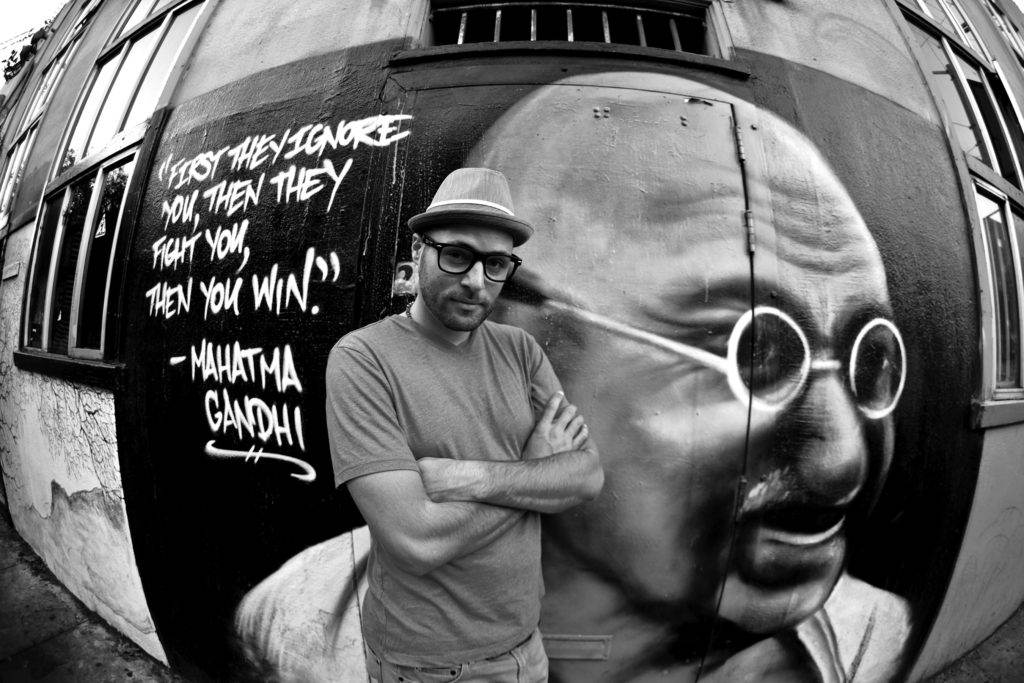
I read the story about your first trip to India where you attended an elaborate Indian wedding. At one stage the grandfather presiding over the wedding turns directly to you as he’s reading the traditional vows and says, “This is where they promise, above all, to be friends.”
I think we’re lucky because I was with someone when I met Nicholas and we didn’t become intimate for a long time. We became friends first. I see a lot of people who become attracted to each other and then are having sex within days or weeks. All the while they are saying, “You’re my soulmate; we should be together forever,” but it’s like, “Whoa! These people never even learned how to be friends! They never learned how to just be normal together.” I think friendship has been a big part of our being together a long time because we had to slow down in the beginning. We’re good friends and we like being together. We share a lot of stuff about what’s going on regularly the way you would with a good friend.
You don’t have children. Was that a conscious choice?
I always thought we would and then as we got older we just never did. And it was a conscious choice. We talked about it regularly. With the lifestyle of a musician and traveling yogi being on the road if we had had children one of us—probably me—would’ve had to stay home. Some couples manage to stay together on the road with kids but I didn’t think that was going to work. So we decided to create a life where we could be together out on the road. That became our goal.
You always travel together to all the festivals and conferences?
Yes, 99% of the time. Occasionally if there’s not a requirement for me to be there and I’m tired I will stay home. Or if I need to be here for the studio. But most of the time we’re together. Somehow we’ve been able to weave it all together so we can go to the same event. He’ll perform and teach and I’ll teach and I’ll paint a mural and we can do it together. When we met I was already painting and had a studio in the lower Haight. Nicholas loved to draw and paint too so we would hang out there all day and work on canvases together. I would draw something until I felt stuck and I would give it to him and then he would draw on top of it, wipe it out, stick something else on it, and then give it back to me.
Nick [laughs] They were never really that good but we had fun doing it.
Can you describe the 10,000 Buddhas project?
The idea came to me on one of our trips to India in 2007 when we decided to visit these remote beautiful ancient Buddhist caves called the Ajanta caves. Inside one of the caves I saw a mural of 1000 little Buddhas sitting together. After I came home I did a few tiny sketches but that image stayed with me for years. Finally I got tired of it bothering me and decided I’d paint my own version of what I remembered seeing in the caves. I started painting them with oil paint and we are actually in the room with them now [points to wall]. These are Buddhas numbers 1 to 99. It took me about nine months to finish because of all the details—on their little hands, their little faces. It was very peaceful and meditative process doing this painting. I didn’t want it to end. When I was close to finishing this one I decided I would keep going until I’d painted 10,000 Buddhas. Now it’s already up to 14,000.
Wow! But they’re not equally this detailed.
[laughs] No, I quickly realized that at the rate of 99 a year I wouldn’t be around long enough! So I made paintings with ink and brush and then picked seven that I really liked and made them into stencils. That sped it up and scaled it up. After several years of just painting on wood and canvases I started painting on the sides of buildings. I have a few that are about three stories high, big murals.
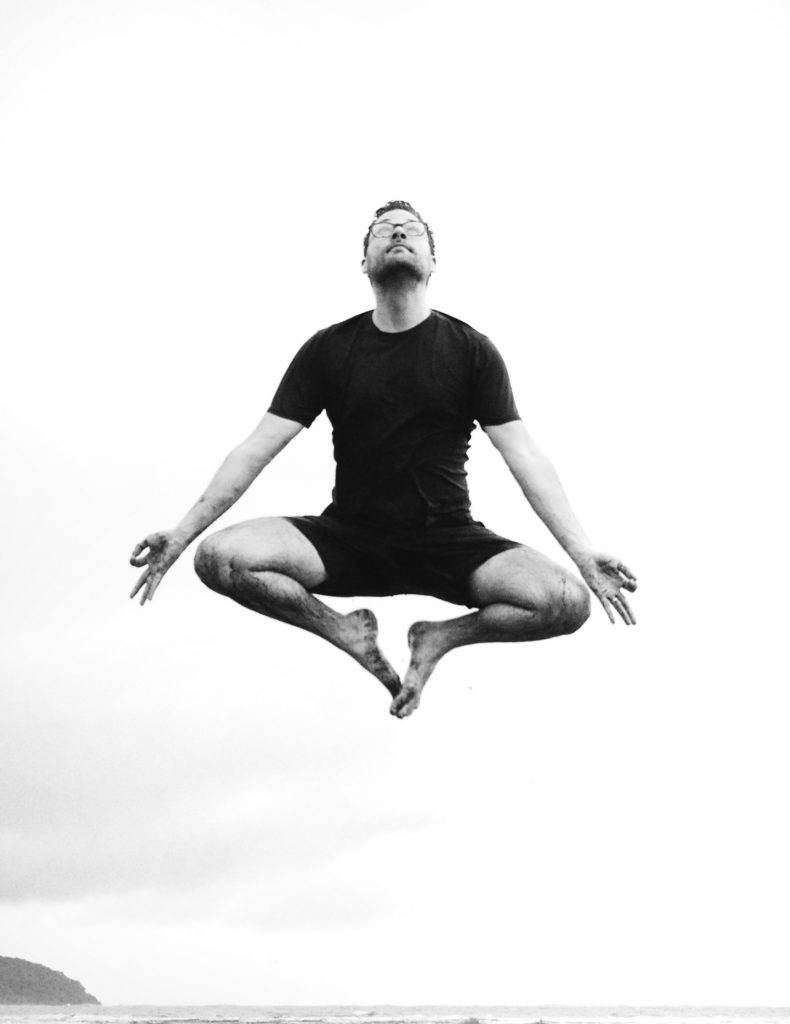
So cool. And you two get to paint together! I’m curious if you see any of the residual of Nick, the once disturbed youth?
[laughs] It sometimes gets triggered. His resistance to authority figures. He doesn’t like anyone telling him what to do.
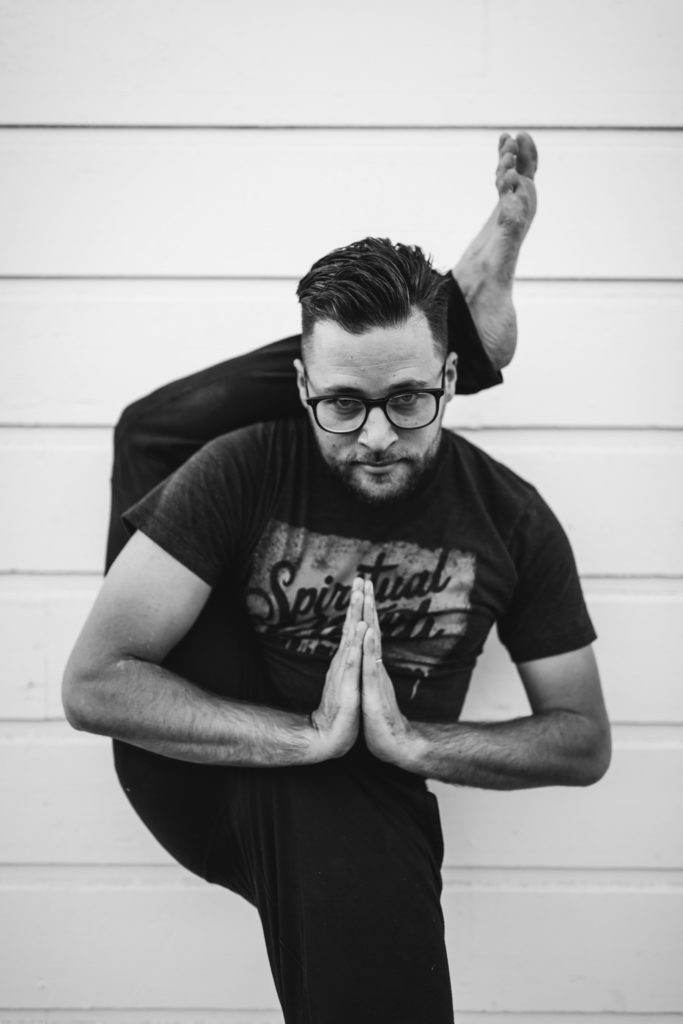
What’s a side we don’t see?
Really, he is a loyal sweetheart who is happiest spending time with family. The MC Yogi I know that not everyone gets to see is him hanging out with family, being a jokester, making people laugh.
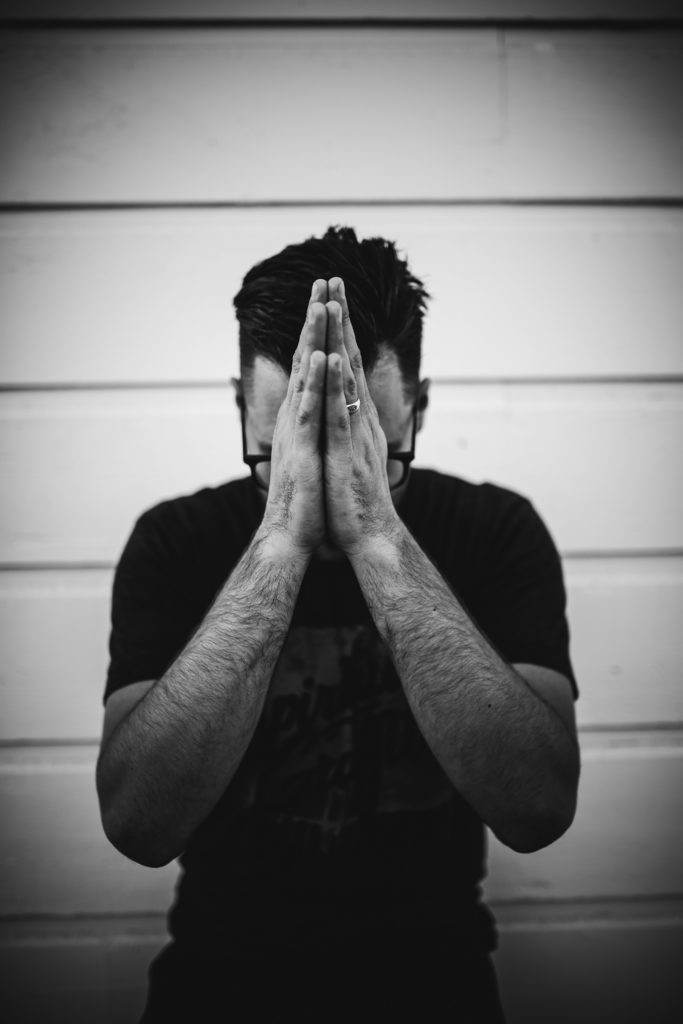
To Nick: What is your main message to troubled youth?
Nick: Freedom through discipline. My main message is “Ask yourself—what’s the thing that you really like doing? What do you like to do when no one is around or if you’re not getting paid to do it?” For me it was listening to music, which led to making music. It was reading comic books—which led to drawing. Then practicing yoga led to teaching. So my message is “Find what you love, identify that and just develop it.” Then let go of the attachment. Don’t put a lot of time pressure on yourself because it’s not going to come to fruition in the time that you probably think. But if you keep watering it and feeding it and devoting yourself to what you love doing, it’s absolutely going to blow your mind—how amazing your life can be when you find that calling.
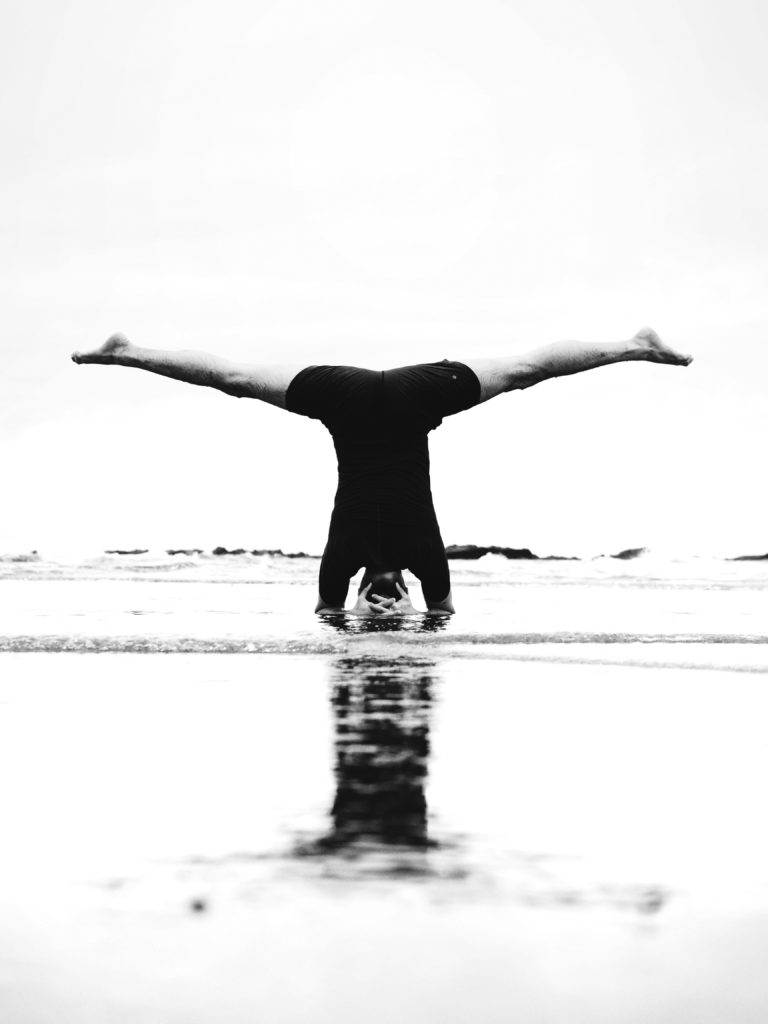
In your Lost Boy days I bet you could have never imagined teaching yoga at the White House. How many times did that happen?
Three or four times. Every year they would have an Easter event on the White House lawn with activities and famous athletes and musicians. Michelle Obama had the idea to include yoga because she had started the Let’s Move initiative to counter the obesity epidemic. It was a really amazing, cool experience because people came from 50 states. [laughs] But no! Never in my life did I think I’d go to the White House!
So it wasn’t like you were giving privates to the First Family?
[laughs] No, I didn’t have that kind of security clearance. Although I did give Michelle Obama a fist bump.
Larry Schultz was right nicknaming you Lucky.
I’m extremely blessed. It goes back to hearing my grandpa say, “What a beautiful day it is!” and ”What a blessing it is just to be alive.” We learn from people, not by what they say but through how they are. That was ingrained in me.
Final parting words?
Thank you. And maintain the common ground.
Rob Sidon is publisher and editor in chief of Common Ground.